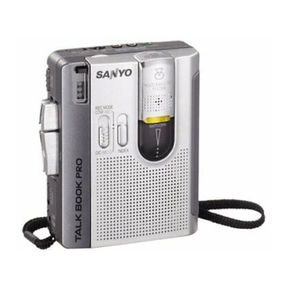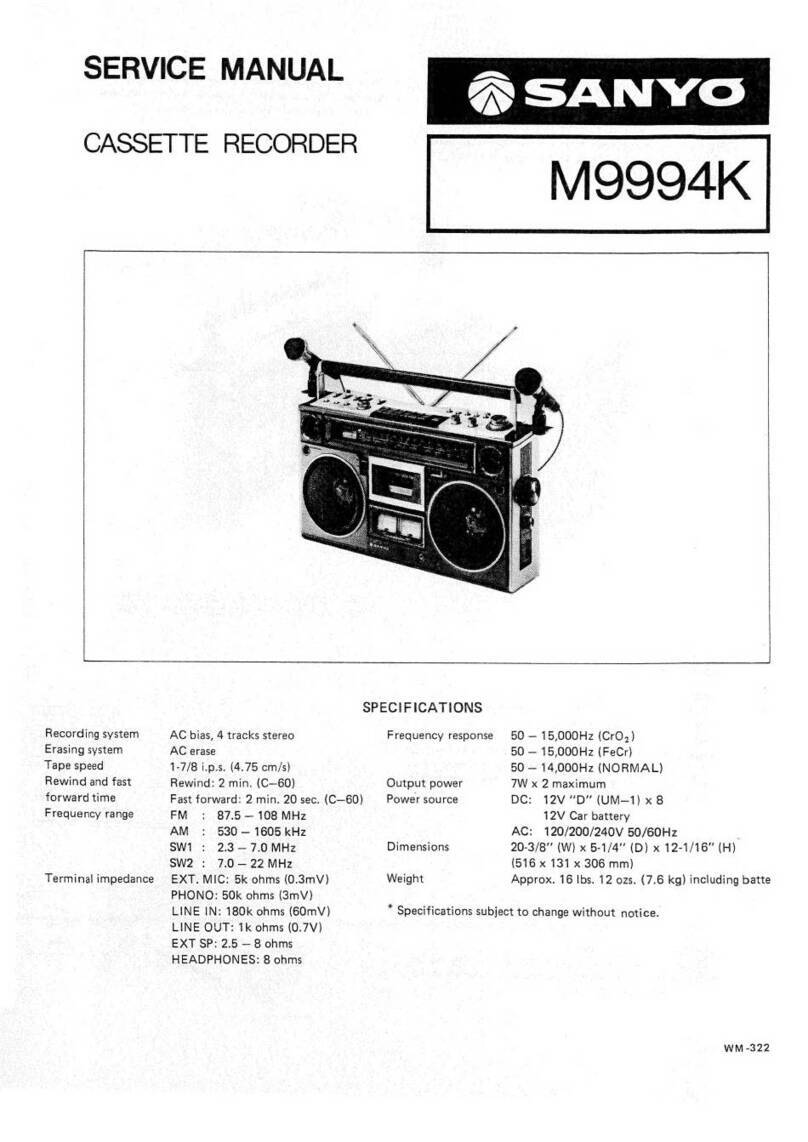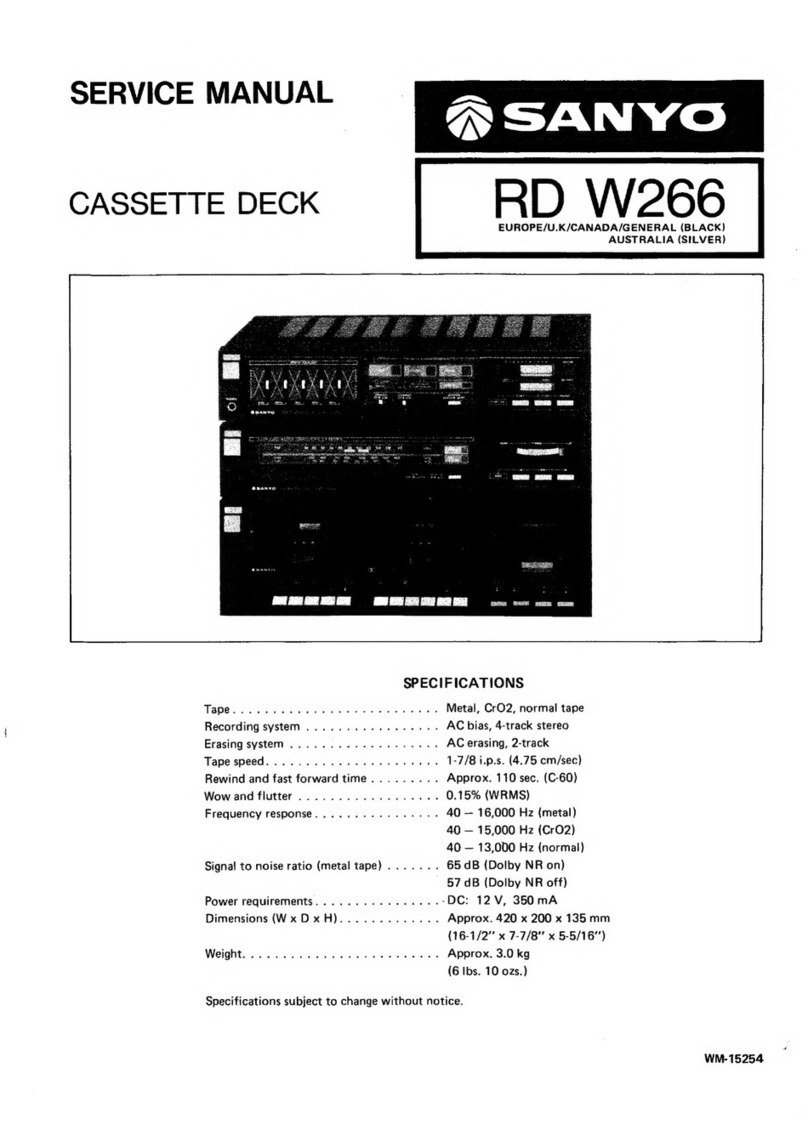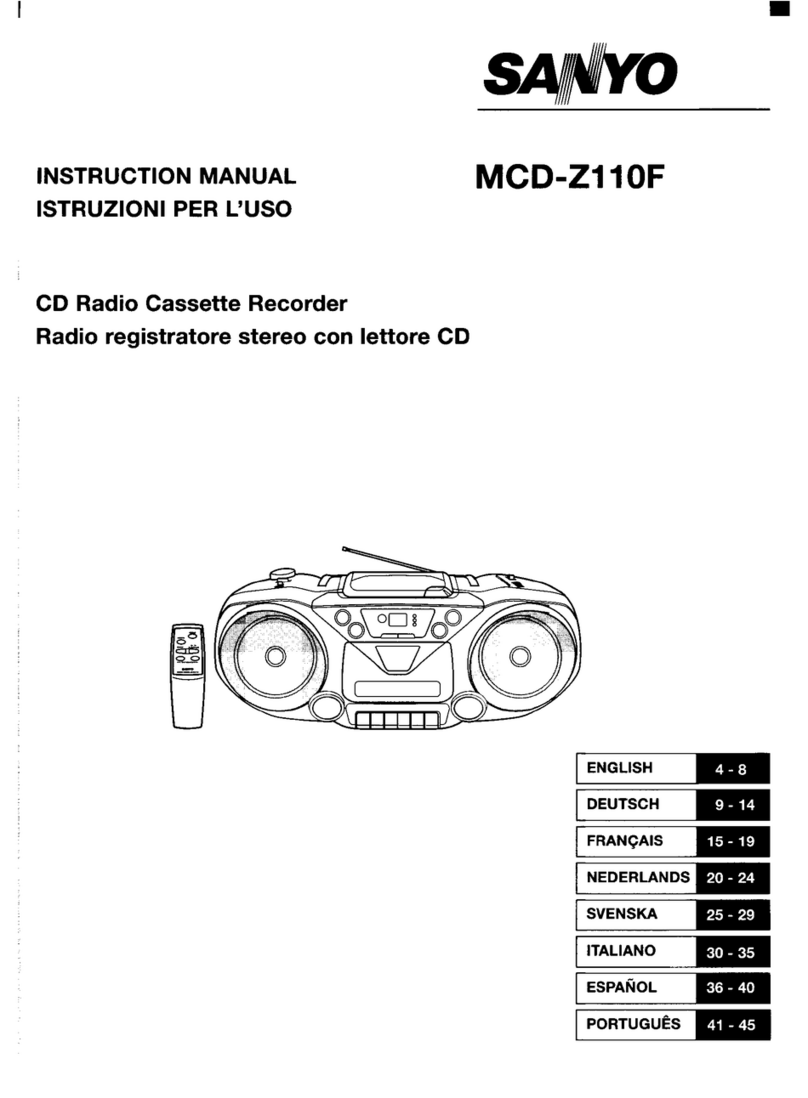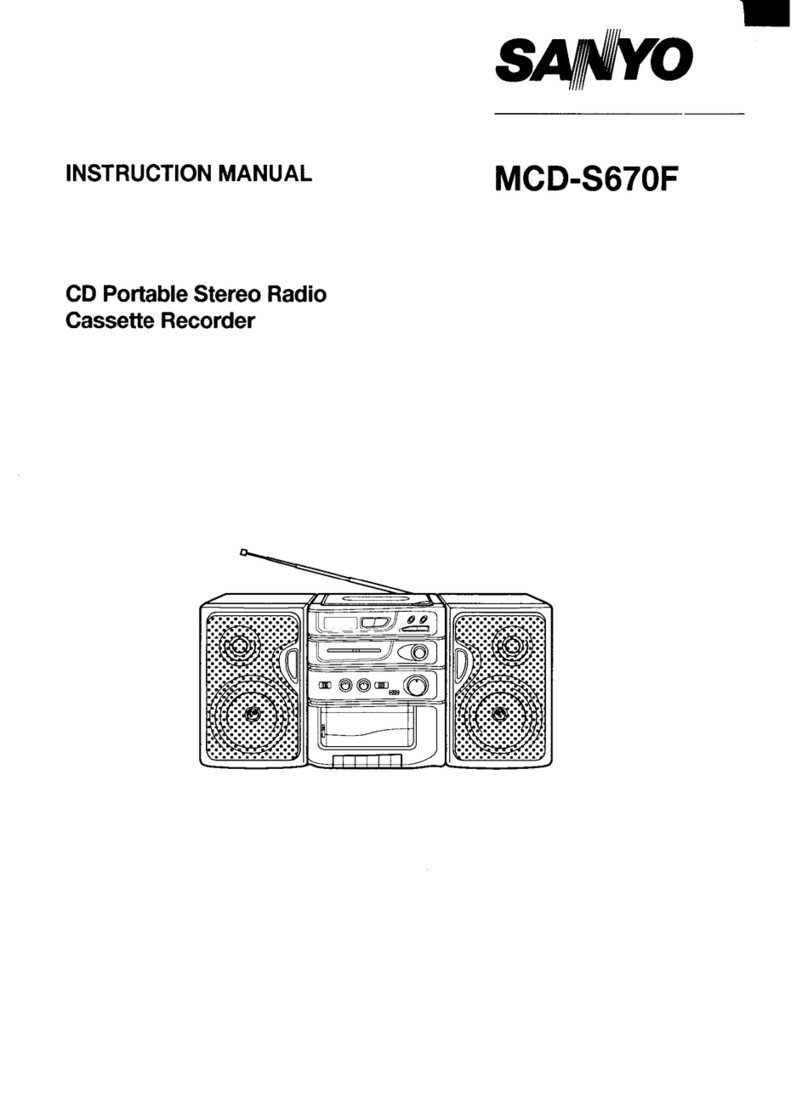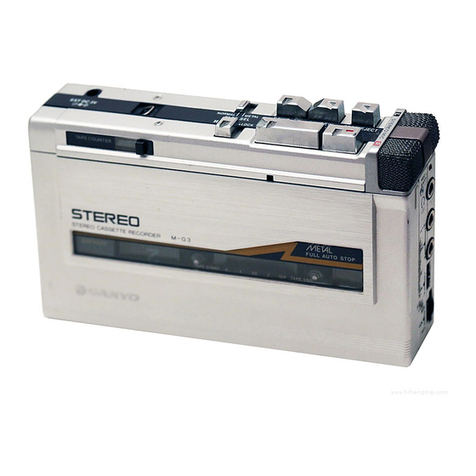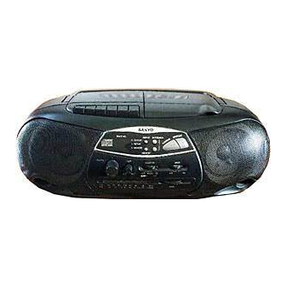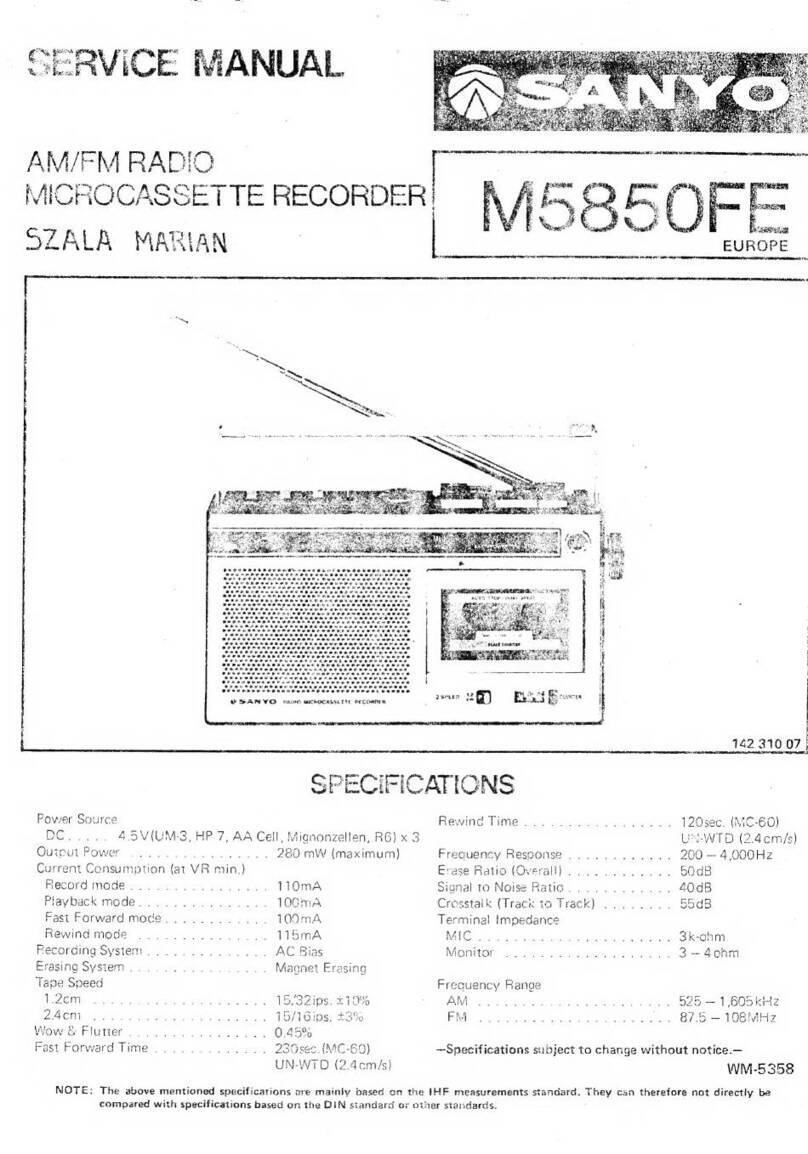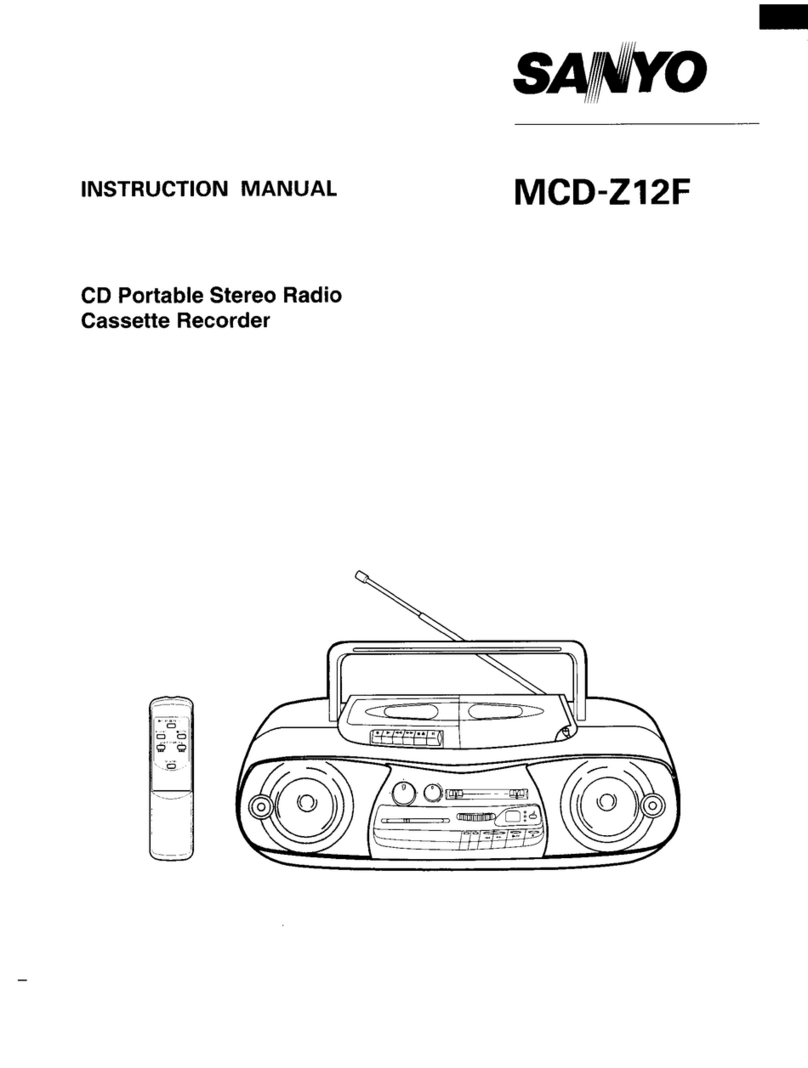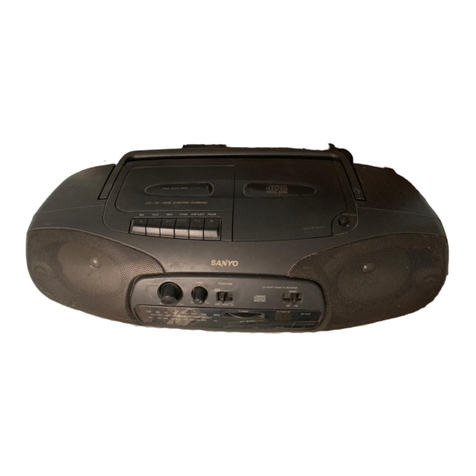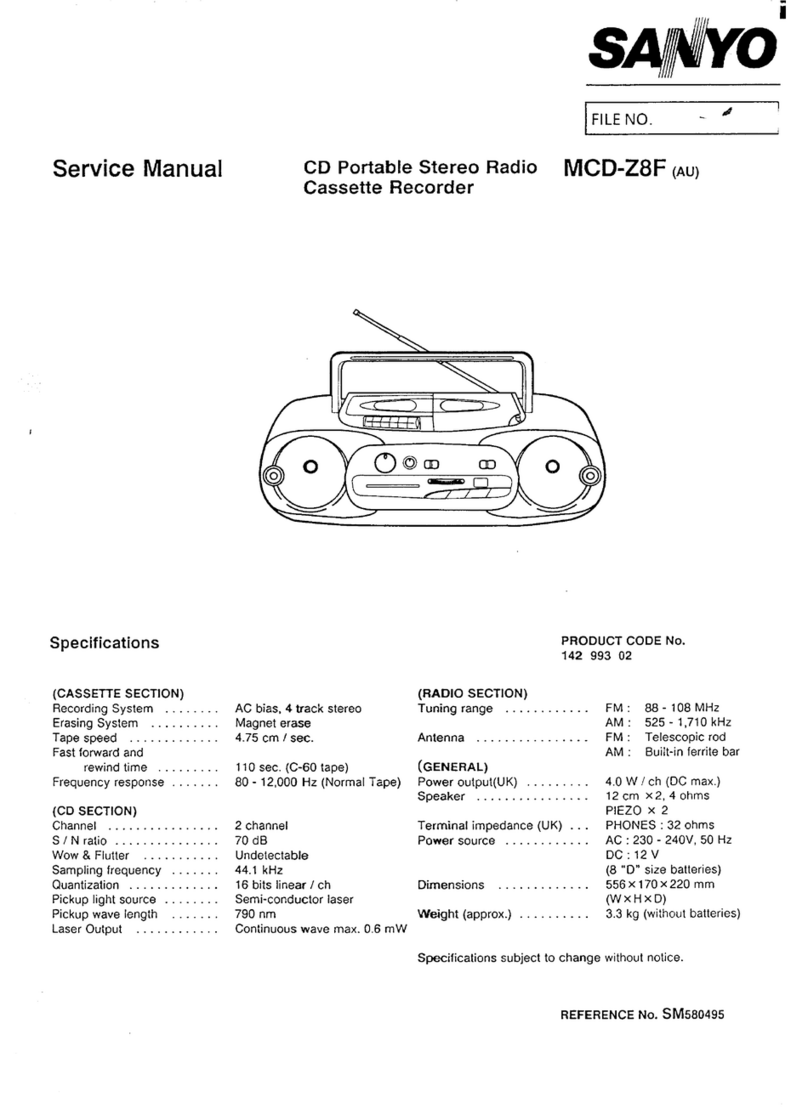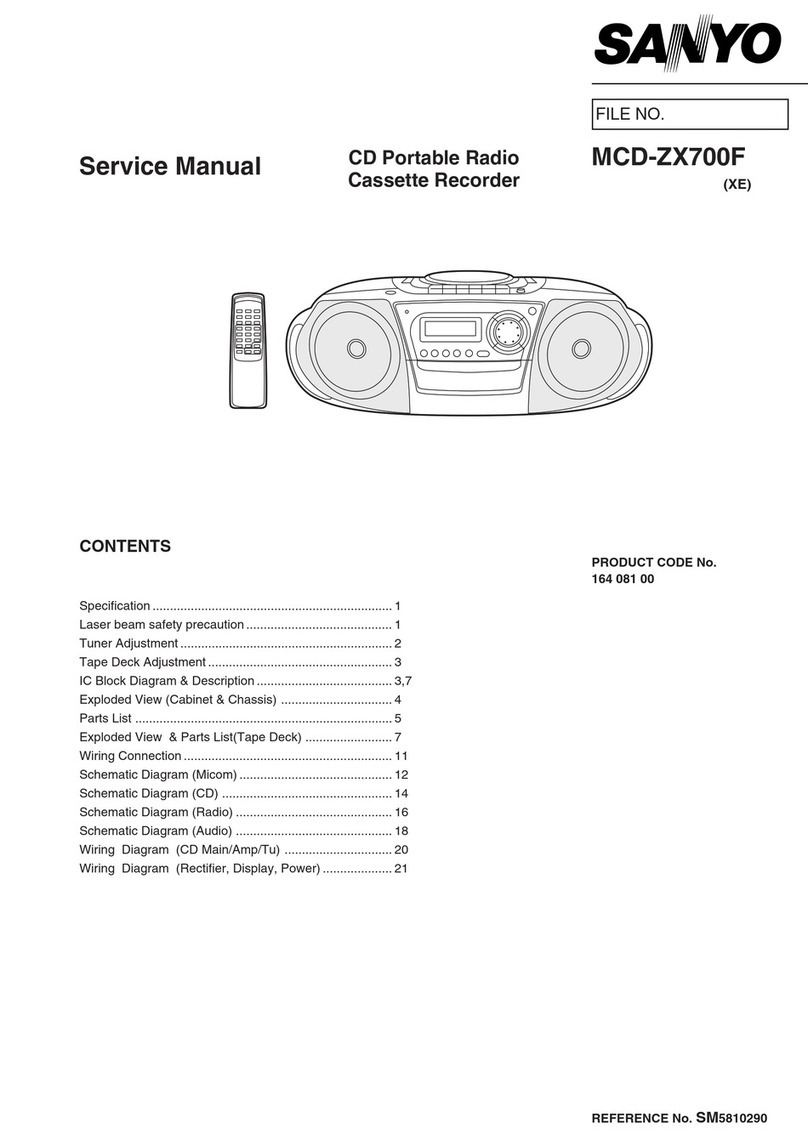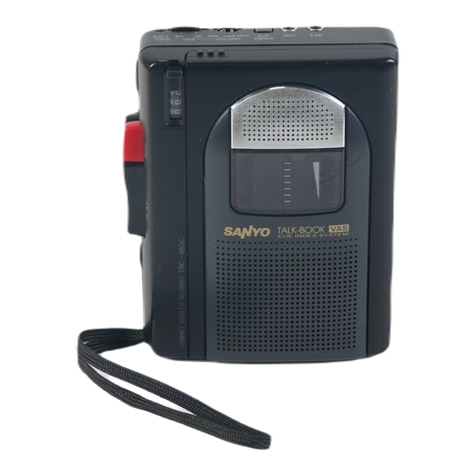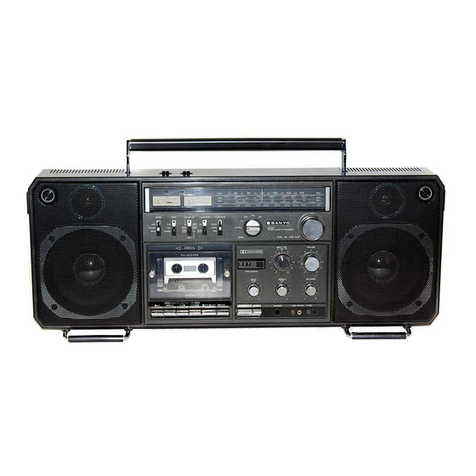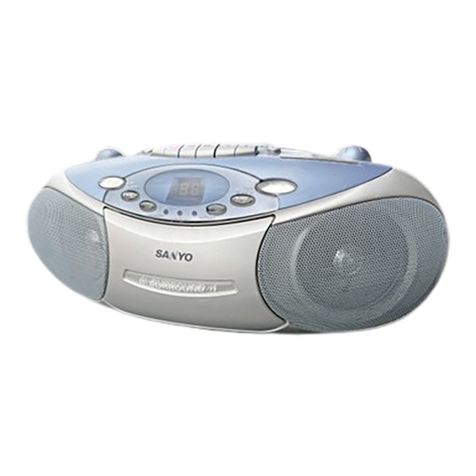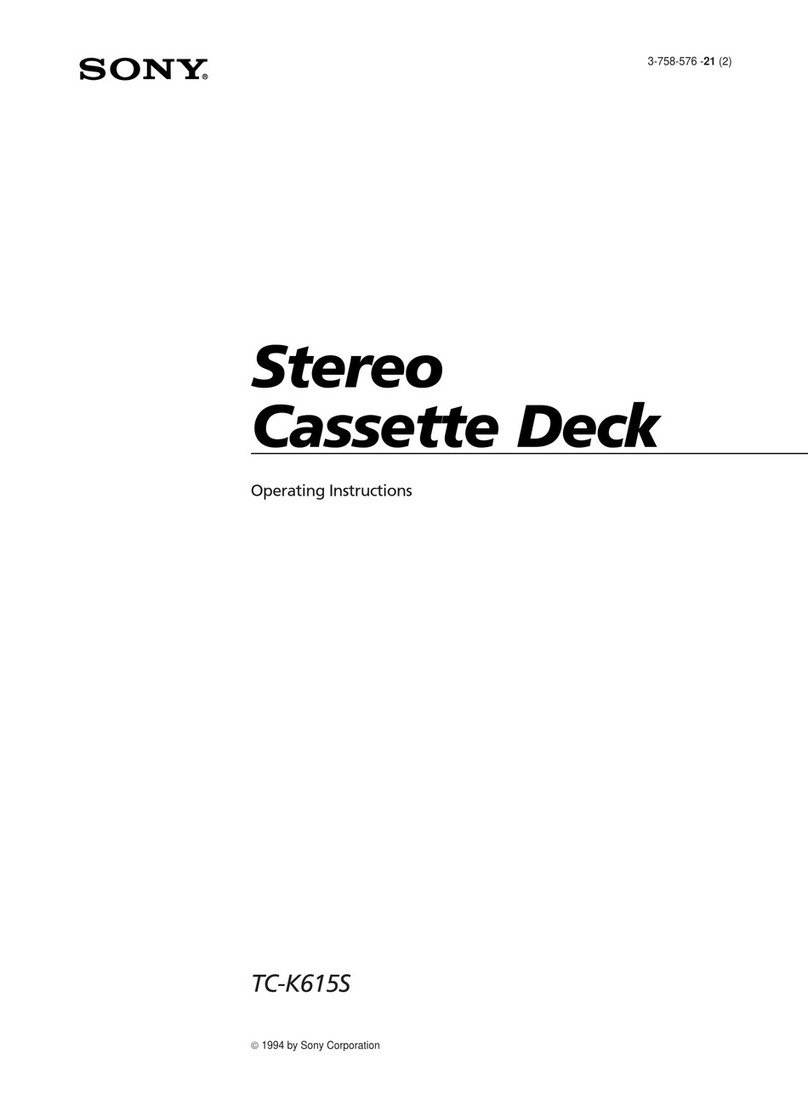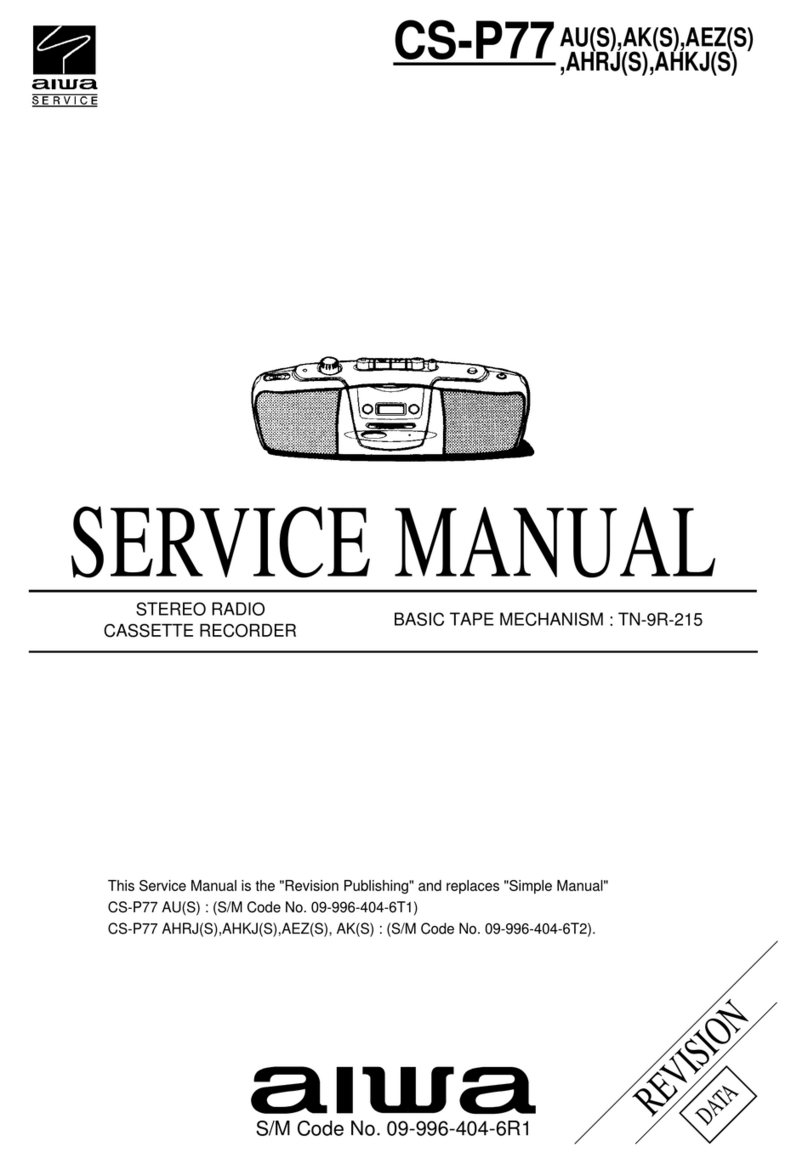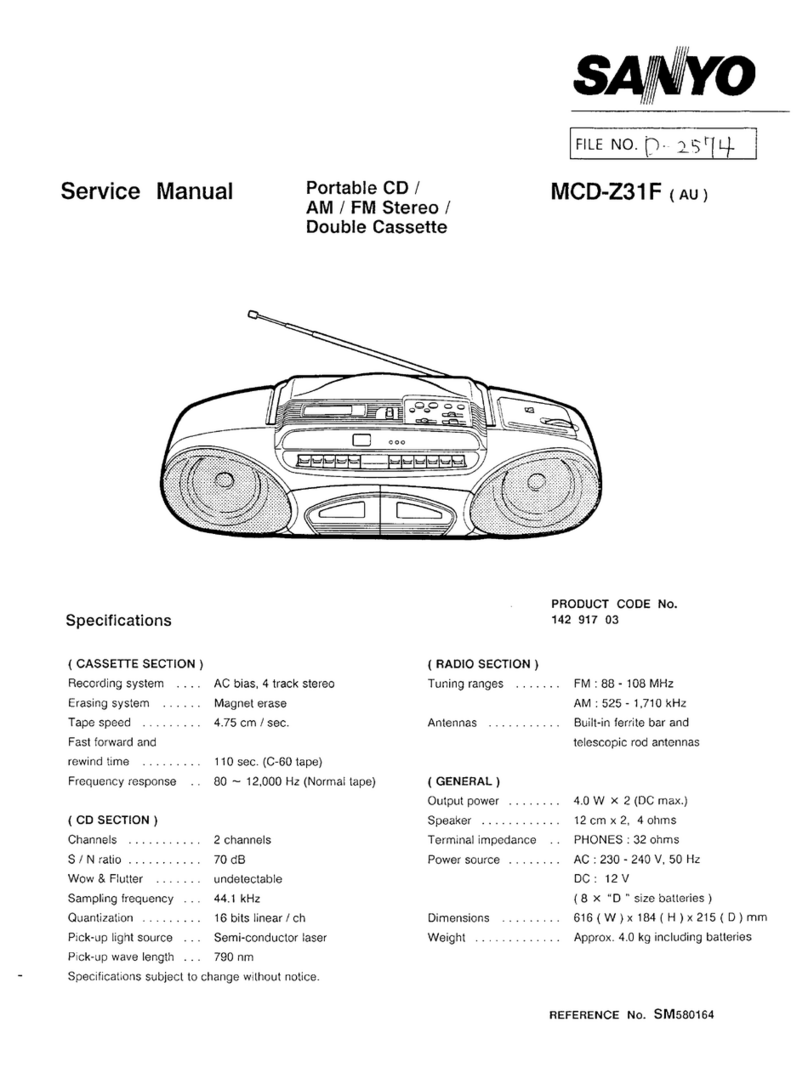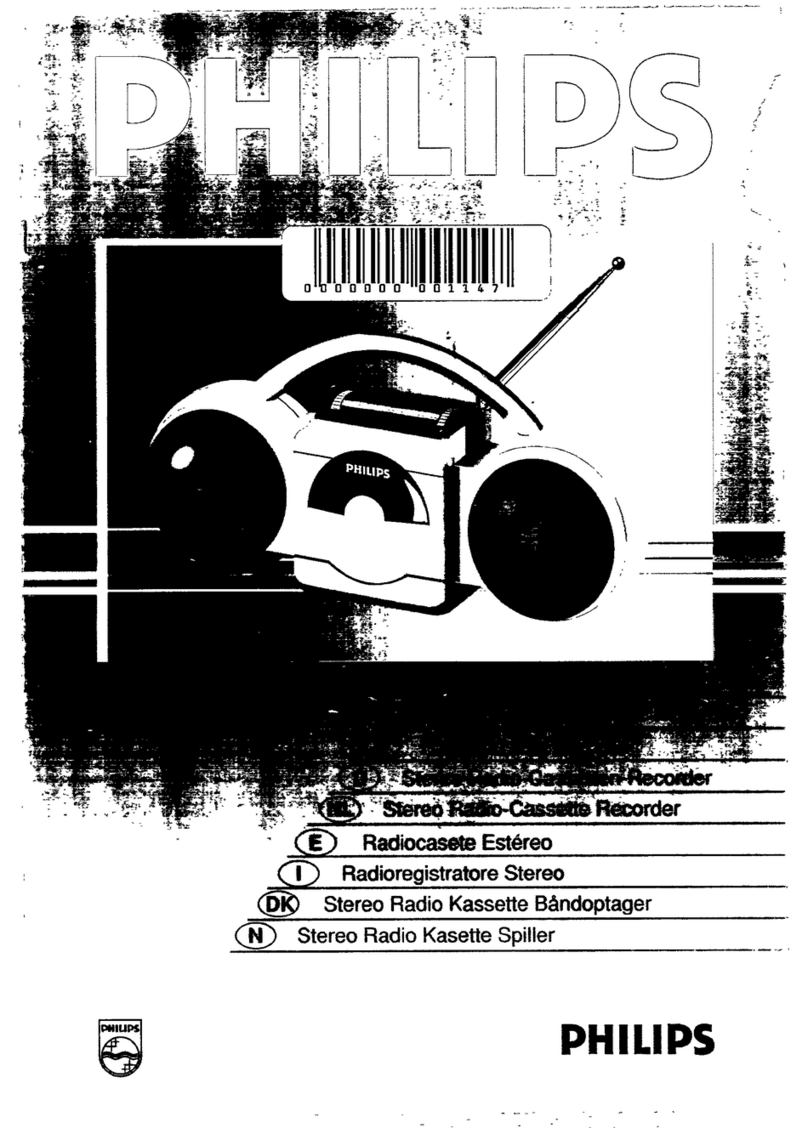CD PLAY
Both 8cm and 12 cm discs can be played in
this unit.
NOTE:
Place only one disc at atime in the CD
compartment.
-Only disc bearing the logo in Fig. 7can be
played in this unit.
Ha~dllng compact discs
AlwRys piatwWcQmparX di!w in the CD
compartment with the label lacing upward,
Compact discs can be played on only one side.
Fingerprints and dust should be carefully wiped
off the disc’s signal surface (opposite the
labeled side) with asoft cloth. Gently wipe in a
straight motion from the inside kI !h~ outside of
the disc.
Discs should be returned to their cases after
used to avoid serious scratche$ that could
cause Ihe player to skip,
Do not expose adisc to direct sunlight, high
humidity, or high temperatures for extended
periods of time to prevent warping the disc.
Do not stick paper or write anything with a
ballpoint pen on a disc.
Do not use cleaners or antistatic srxavs on
discs, like those used for phonograph re;ords.
LQADING ADISC
1, $k?t[FL!NCTfQN] la CD,
“Cd” appears.
2. Press [CD OPEN]. The lid will open.
3. Place adisc carefullyon the turntable in the CD
compatiment, with the label side facing up
(Fig. 8).
4. Push [PUSH TO CLOSE] on the lid to close it.
Thedi$play willshowthetolal number (Max.99)
of tracks on disc,
NOTES:
if adisc is loaded upside down, or if no disc is
loaded, the CD player will not operate.
During CD play, do not open the CD
compartment lid. Always press [STOP/CLEAR]
and wait for the disc to stop rotating before
opening the CD compartment lid.
NORMAL PLAY
1. Press [PLAY/PAUSE]. Play will begin with
track number 1.
The following information is displayed:
The current track number
-Play indicator (b)
NOTE:
To start play from the desired track, select the
track by using [SKIP/SEARCH] 1<4 or ➤>1,
then press [PLAY/PAUSE].
2. Adjust [VOLUME], [TONE] and
[BASSXPANDEiR] CMdesired,
3, Press[STOP/CLEAFf]to stop play at any time,
When the last track has played, the CD player
will automatically stop.
Temporarily stopping play
Press [PLAY/PAUSE] during play, ”h” blinks, To
resume play, press [PLAY/PAUSE] again.
Track skip
Prcw and rolc+irao[6KlW&3EAf%H] 14< w’ MI
repeatedly during play 10 quickly locate the
beginning of atrack.
The display will show the number of the selected
track, Play will continue from the beginning of Ihe
new track.
Search (forward/reverse)
If [SKIP/SEARCH] 14< or ➤>1 is pressed during
play, the CD player will search at high speed in the
fOrWar~ or reverse direction while the button is
being pressed, Track number blinks. When the
button is released, normal play will continue.
Repeat play
This function allows all the tracks on a disc or the
programmed tracks only to be played repeatedly.
Press [REPEAT/FM MODE] before play or during
play, “REP” appears,
To cancel the repeat play function, press [REPEAT/
FM MODE] again.
7
